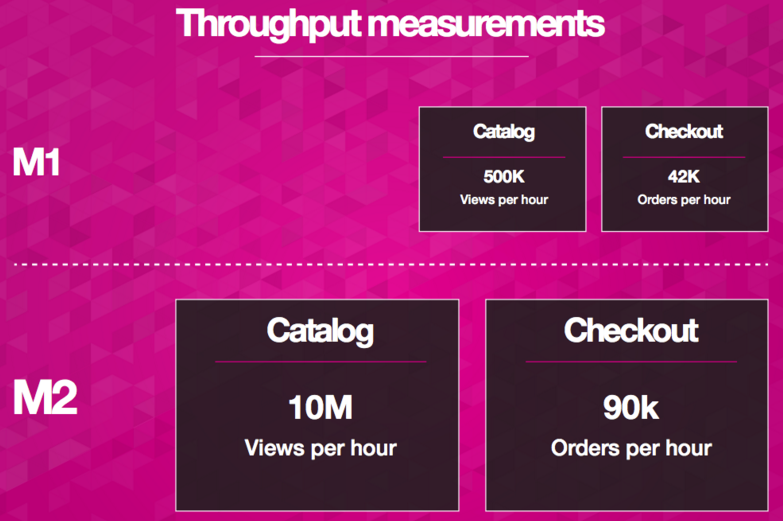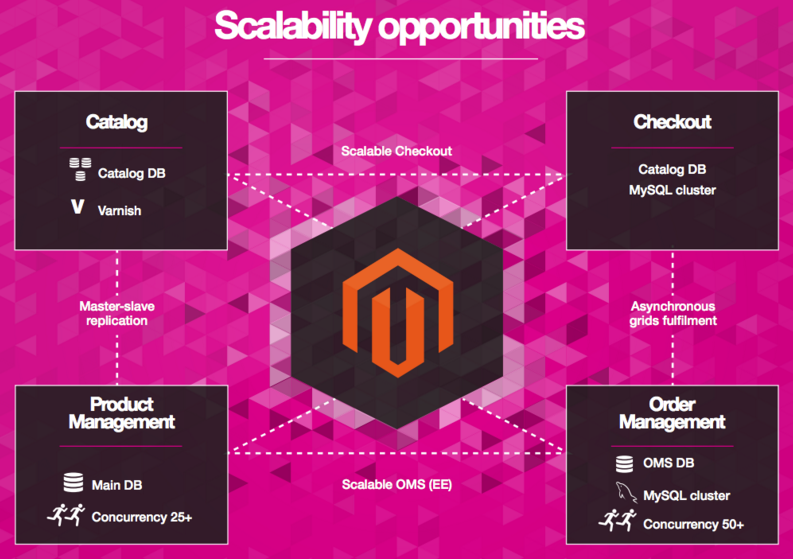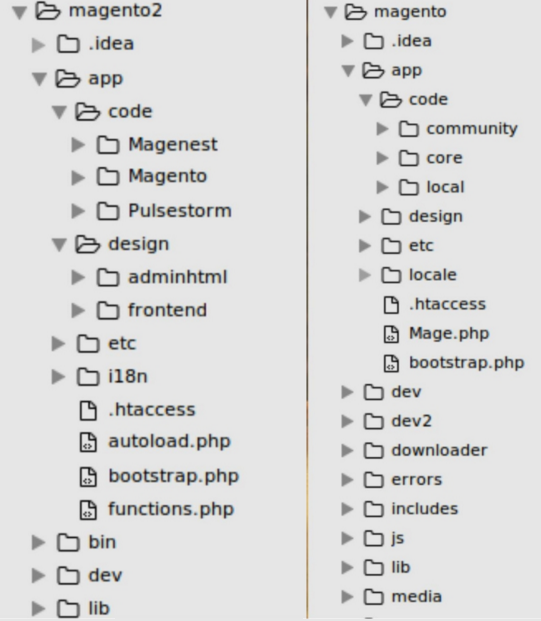Magento 2 vs Magento 1

The appearance of this post on our blog was only a matter of time. We’ve already briefly compared the new version of our favourite ecommerce platform with its major competitors, and now it is time to discuss the Magento 2 vs Magento 1 topic.

In comparison with 1.X, Magento 2 introduces some vital improvements to scalability, performance, and security. These three areas caused a lot of troubles and inconveniences among users of the previous platform version, therefore we can see a lot of extensions and services aimed at solving various performance and security problems.
How much has the situation changed after the release of Magento 2? A lot, but it doesn’t mean that there is no room for improvement anymore. We already have some robust Magento 2 modules designed to enhance the existing capabilities of the platform, but even without installing them Magento 2 shows better ecommerce results then Magento 1.
Since Magento 2 relies on a modern technology stack and a revamped code base, it offers such advantages as easier and at the same time unlimited customization, faster time to market, as well as higher deployment flexibility when it comes to all possible cloud environments.
Besides, Magento 2 introduces an absolutely new approach to adding product lines, exploring new channels, and integrating additional ecommerce capabilities. If compared to 1.X, your daily routine is much simpler and faster now. In addition, you get rapid testing, advance omnichannel features, and top-notch business metrics management. Below, we explain these benefits in details.
Table of contents
Architecture and Technology Stack
Since Magento 2 offers a more modular code base and rebuild service contracts, we can see the platform with an environment which is more opened to both new ecommerce ideas and customization of default features. With extensive APIs and automated testing, Magento 2 introduces faster and higher-quality integration and deployment with other ecommerce solutions and tools.Furthermore, there are a plethora of additional technologies unavailable in Magento 1.X used to improve the performance of Magento 2. The deepest integration with various third-party solutions brings a lot of benefits.
With the aid of modern tooling and approaches, Magento 2 provides developers with better working environment that shows an absolutely new level of flexibility ensuring compatibility between its components. Thus, the new architecture and the revamped technology stack lead to the decrease in the server response time and the increase of the rendering speed related to browser side. Just look at the following image by Session Digital that illustrates throughput measurements of Magento 2 compared to Magento 1.

Although this Magento 2 vs Magento 1 picture illustrates the great difference between two versions of the platform, it is only the beginning of our comparison.
Performance and Scalability
Being clumsy and resource-hungry, Magento 1 works on full power only in case of big enterprises, which is a sufficient drawback, but with the new release the situation has changed dramatically. Magento 2 not only offers higher performance capabilities, it also offers them to the smallest merchants. Visitors now have a great chance to forget about delays while accessing a Magento 2 website. Furthermore, the largest order volumes and enterprise-level site traffic are easily handled by 2.0 as illustrated above.
As for the scalability, Magento 2 no longer relies on a monolithic structure using a number of independent components instead. Another image by Session Digital illustrates scalability opportunities introduced in Magento 2:

As a result, you get a completely revamped shopping experience.
New Shopping Experiences
Magento 2 offers fast and easy checkout, better responsive design options, enhanced personalization, and a simpler product discovery.
The 2 step checkout process is lightning fast in Magento 2. In not only reduce the number of overall steps, but minimizes the amount of required information. Besides, every customer can now create an account within just one click without any need to interrupt the transaction.
As for personalization, Magento 2 relies on data influenced content in promotions, product recommendations, and other processes, making the available ecommerce experience much more user-oriented when it is in 1.X.
Easier shopping in Magento 2 is also possible due to better search capabilities and layered navigation. Customers can find exactly what they are looking for without any headaches.
Productivity Features
Productivity features introduced in Magento 2 include a new more user-friendly admin panel, guided product onboarding, which is also quite convenient. Faster import/export (you can make it even better with our extension – The Improved Import / Export Magento 2 Extension) and customized views are also among benefits over Magento 1 introduced in Magento 2. As a merchant, you can manage various data types more efficiently, selling right goods to right customers at proper time.
Customization
Major layout manipulations are now available to everyone. While Magento 1 requires technical knowledge for the implementation of layout changes, Magento 2 relies on the Visual Design Editor with a drag-and-drop interface. Consequently, every merchant can easily modify blocks and containers within a website.
File Structure
As a developer, you can feel the benefits of Magento 2 with a new file structure. Major working files are now reorganized and moved under the “app” file. The only exception is the config.xml file. All your templates, layouts, and css/js files are situated under the “view” file of each module. And that is true for both frontend and backend. Besides, Magento 2 offers a single code pool for both custom and core modules. Just check the below picture by Magenest:

Such changes are extremely helpful for easier code maintenance, and they do not affect the core functionality of the platform.
Default Theme
Luma is a new default theme introduced in Magento 2. Being clean and eye-catching, it offers some essential improvements over the Madison Island theme introduced in Magento 1.The benefits include tiles structure, responsive images, responsive typography, better performance, and the aforementioned rewamped backend UI.
Various Technologies and Features
jQuery is now the default Magento 2 library used instead of Prototypes used in Magento 1. As for the built-in technologies of Magento 2, they are:
- RequireJS
- PHP 5.5.x
- Full page caching
- Apache 2.2 or later
- PSR Compliance
- Composer
- Magento UI library
- Magento performance toolkit
The appropriate Magento 1 list consists only of 4 items:
- Sass/Compass
- Prototype
- Jquery in rwd
- Additional JS libraries
New object manager, dependency injection, and a command line interface are also among core benefits of Magento 2. With these features, developers can significantly change the way they interact with the platform. For instance, a new CLI tool not only contains useful commands, it also supports the ability to add new custom commands. You can read more about the Magento 2 CLI here: Magento 2 Command Line Tool.
Useful Links







